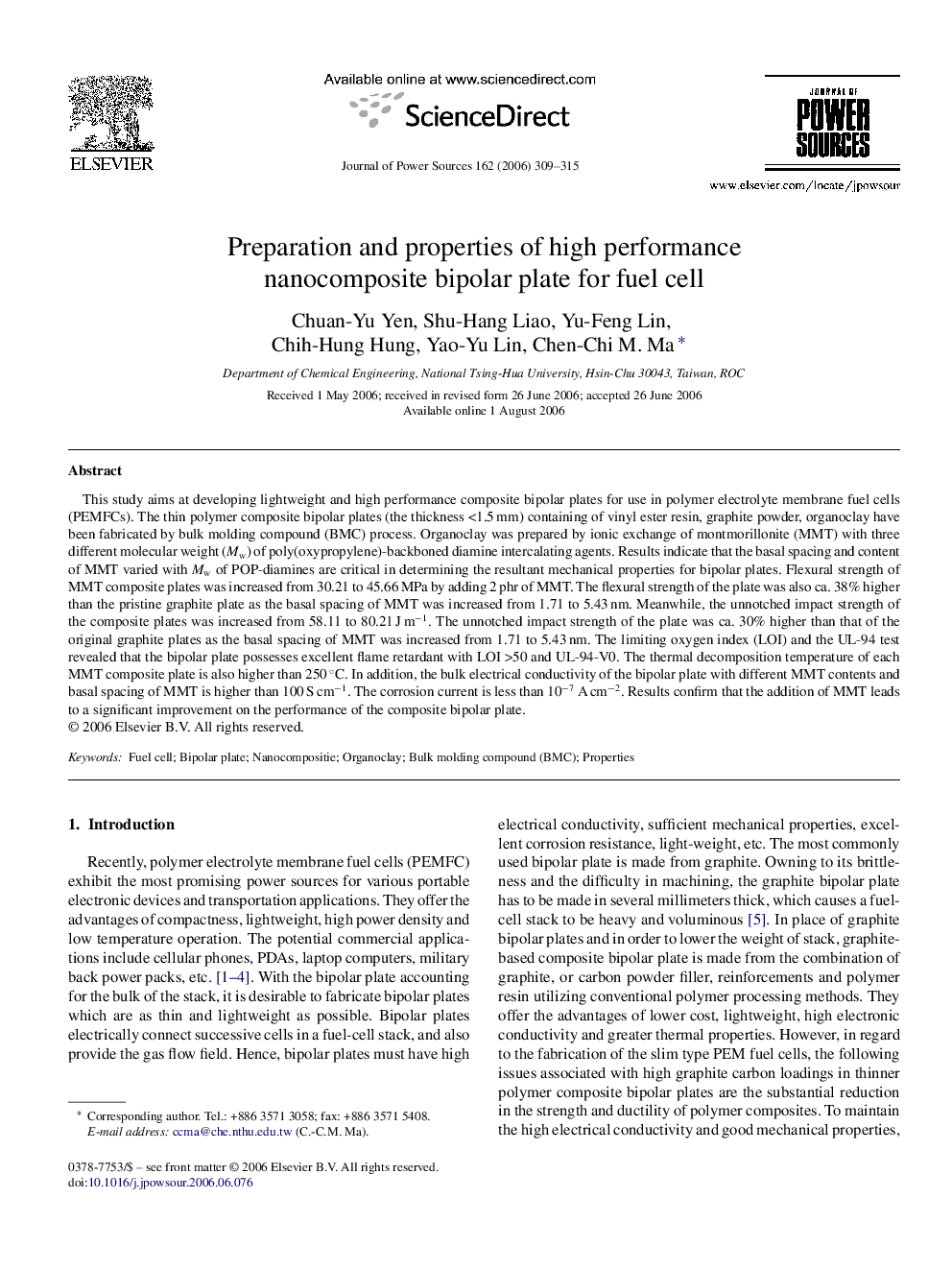| Article ID | Journal | Published Year | Pages | File Type |
|---|---|---|---|---|
| 1291852 | Journal of Power Sources | 2006 | 7 Pages |
This study aims at developing lightweight and high performance composite bipolar plates for use in polymer electrolyte membrane fuel cells (PEMFCs). The thin polymer composite bipolar plates (the thickness <1.5 mm) containing of vinyl ester resin, graphite powder, organoclay have been fabricated by bulk molding compound (BMC) process. Organoclay was prepared by ionic exchange of montmorillonite (MMT) with three different molecular weight (Mw) of poly(oxypropylene)-backboned diamine intercalating agents. Results indicate that the basal spacing and content of MMT varied with Mw of POP-diamines are critical in determining the resultant mechanical properties for bipolar plates. Flexural strength of MMT composite plates was increased from 30.21 to 45.66 MPa by adding 2 phr of MMT. The flexural strength of the plate was also ca. 38% higher than the pristine graphite plate as the basal spacing of MMT was increased from 1.71 to 5.43 nm. Meanwhile, the unnotched impact strength of the composite plates was increased from 58.11 to 80.21 J m−1. The unnotched impact strength of the plate was ca. 30% higher than that of the original graphite plates as the basal spacing of MMT was increased from 1.71 to 5.43 nm. The limiting oxygen index (LOI) and the UL-94 test revealed that the bipolar plate possesses excellent flame retardant with LOI >50 and UL-94-V0. The thermal decomposition temperature of each MMT composite plate is also higher than 250 °C. In addition, the bulk electrical conductivity of the bipolar plate with different MMT contents and basal spacing of MMT is higher than 100 S cm−1. The corrosion current is less than 10−7 A cm−2. Results confirm that the addition of MMT leads to a significant improvement on the performance of the composite bipolar plate.
